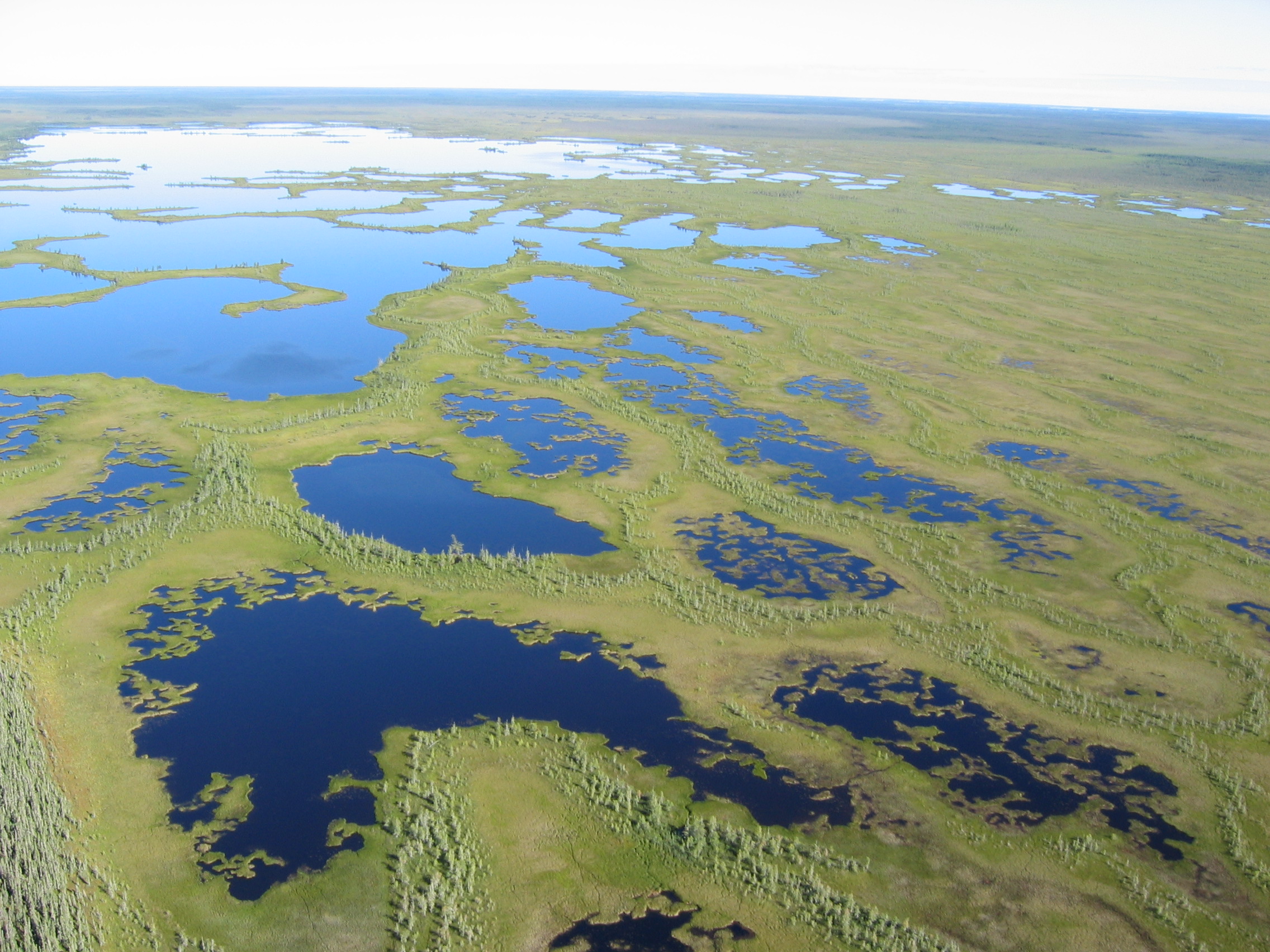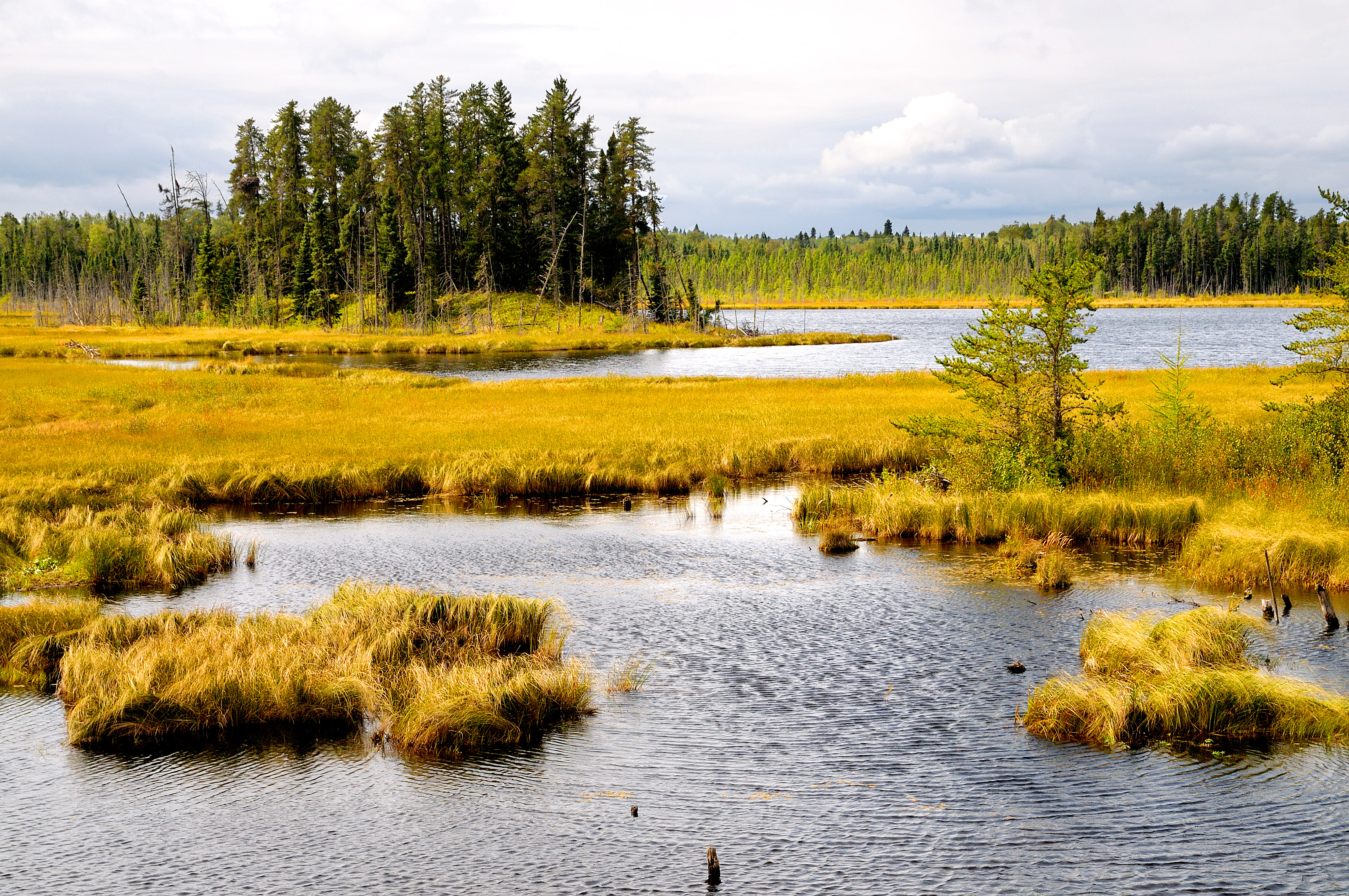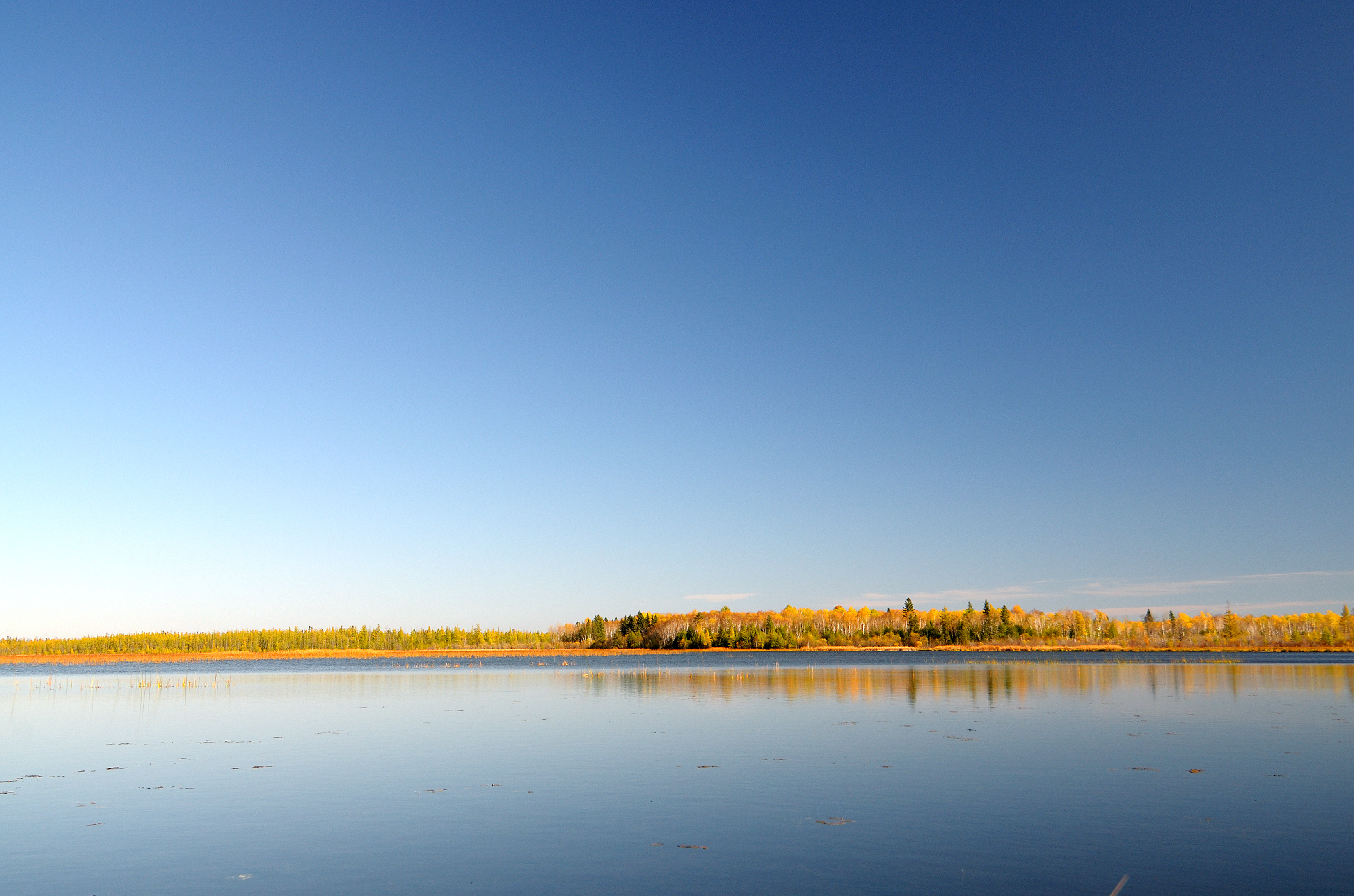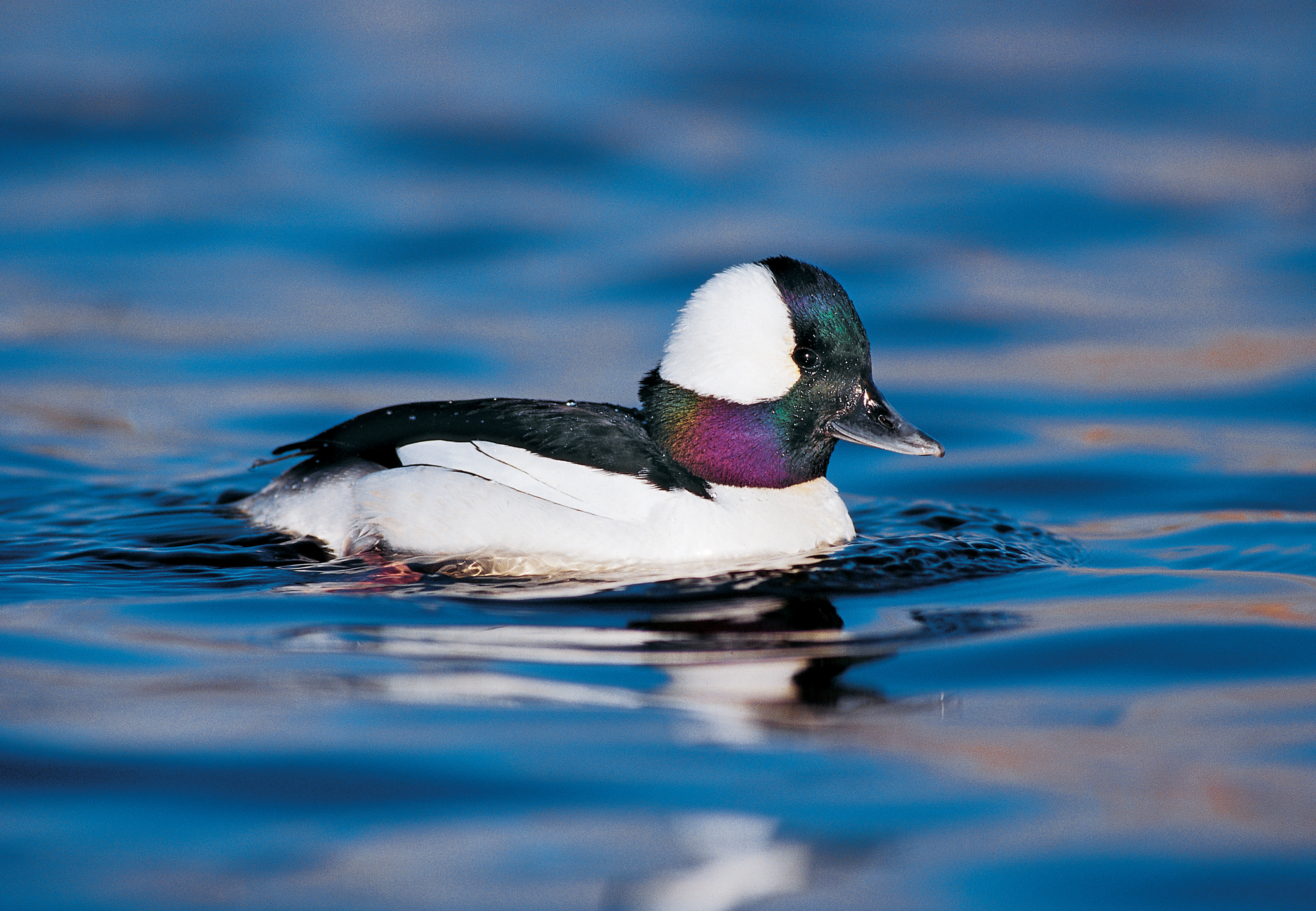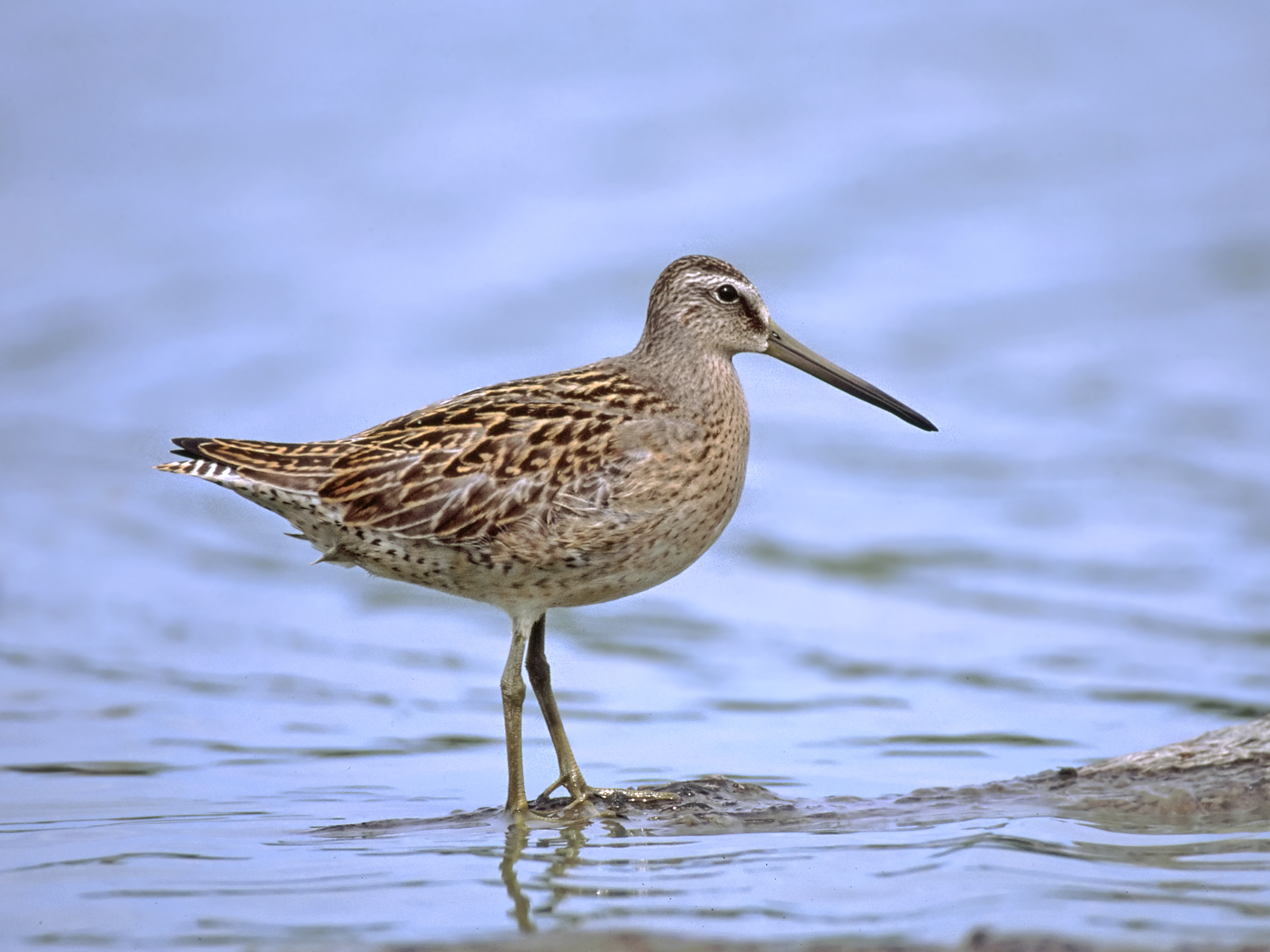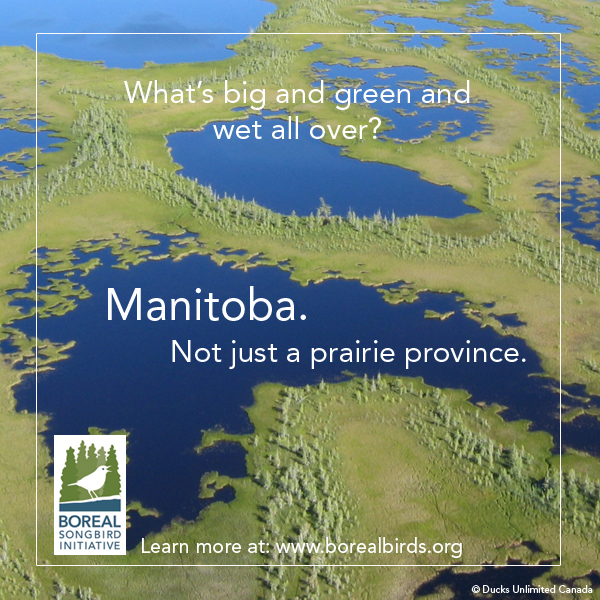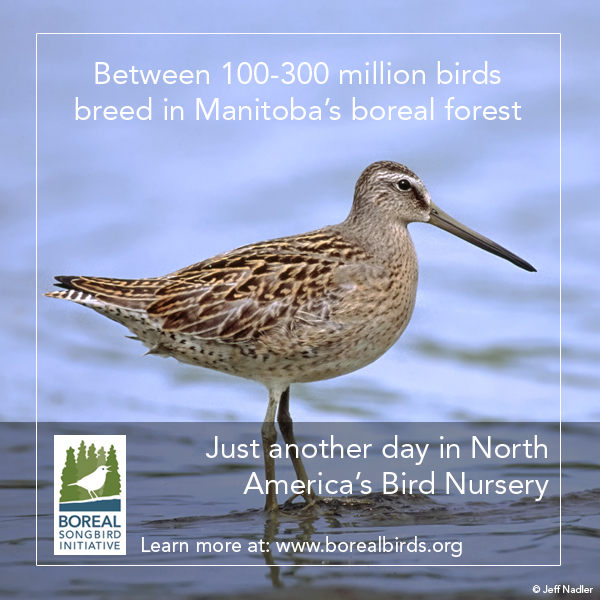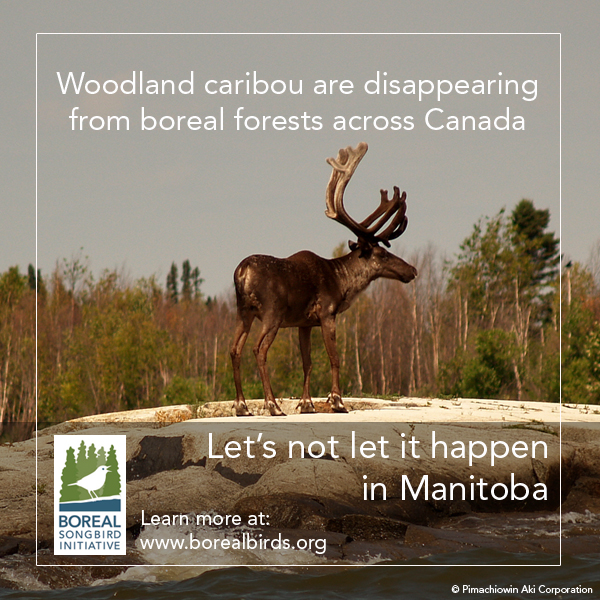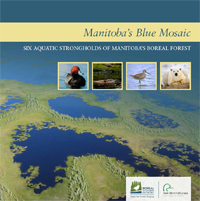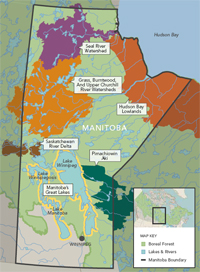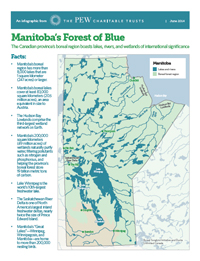Announcements
Manitoba's Blue Mosaic: Six Aquatic Strongholds of Manitoba's Boreal Forest
Although Manitoba has been historically thought of as a prairie province, the reality is that it is much, much more. Covering more than three-quarters of the province, Manitoba's boreal forest is home to millions of migratory birds (including dense regions of nesting waterfowl), some of Canada's most iconic large mammals, deep carbon stores that help to cool the planet, and some of the most impressive networks of wetlands and waterways on Earth.
Few places left on Earth can boast of having the opportunity that Manitoba has. As forests and wilderness around the world have shrunk to a fraction of what they used to be, Manitoba provides an inspiring counter narrative: more than 80% of Manitoba's 570,000 km² boreal forest remains intact and unspoiled from industrial development to date. These large tracts of undisturbed forest provide great opportunities for large-scale conservation that is, unfortunately, no longer possible in most of the world.In this report, we summarize some of the most astonishing facts about Manitoba's boreal forest—from caribou and carbon to wetlands and waterfowl. We also highlight six regions that demonstrate the diversity of boreal forest within Manitoba and some of the features that make it truly stand out as a special region.
Key highlights from report:
- SIZE/INTACTNESS: Around three-quarters of Manitoba consists of boreal forest; more than 80% of Manitoba’s boreal forest remains highly intact to this day.
- DIVERSITY: Manitoba is the only province or territory in Canada to prominently feature at least four major boreal ecozones (Boreal Plains, Boreal Shield, Hudson Plains, and Taiga Shield), demonstrating its remarkable diversity.
- LAKES: More than 8,000 lakes both small and large are sprinkled throughout Manitoba’s boreal forest, the combined surface area of which (83,000 km²) is equivalent to the size of Austria.
- RIVERS: All of Manitoba’s rivers either originate in or eventually drain through Manitoba’s boreal forest into Hudson Bay. These rivers, particularly the unaltered ones, provide critical nutrients from upstream to support Hudson Bay wildlife—from migratory fish and seals to beluga whale and polar bear.
- WETLANDS: Around 40% of Manitoba’s boreal forest consists of wetlands. These wetlands are critical in storing carbon, regulating droughts and floods, and removing contaminants from waterflow into rivers and lakes, especially in the case of Lake Winnipeg.
- CLIMATE: Manitoba’s boreal forest is estimated to store a minimum of 19 billion tonnes of carbon, equivalent to nearly 1,000 years of Manitoba’s annual greenhouse gas emissions. Current carbon offset marketplaces place the value of this carbon at $117 billion.
- BIRDS: Between 100-300 million birds of more than 250 species breed in Manitoba’s boreal forest each year, including federally-listed species like Yellow Rail, Canada Warbler, and Rusty Blackbird. It is a critical breeding ground for waterfowl, with approximately 20% of all waterfowl found in the western boreal region originating in Manitoba.
- WILDLIFE: Manitoba’s boreal is one of Canada’s last safe havens for the declining woodland caribou, is a stronghold for moose, beaver, and wolf, and is the only non-territory in Canada to feature black, grizzly, and polar bear. The latter has become a staple of northern tourism for the province.
Experts for Interview
Jeff Wells
Science and Policy Director, Boreal Songbird Initiative
(207) 458-8492
jeffwells@borealbirds.org
Christopher Smith
Head Boreal Conservation Programs, Ducks Unlimited Canada
(204) 620-0328
c_smith@ducks.ca
Pascal Badiou (French)
Research Scientist, Ducks Unlimited Canada
(204) 467-3277
p_badiou@ducks.ca
Images for Media Use
The following images are offered free for media and editorial use provided credit is visibly displayed. Please use these images on a one-time basis for covering the content of this report. Please contact David Childs at (206) 905-4801 or davidc@borealbirds.org if you would like images for all six areas highlighted in this report to create a slideshow or if you have other questions regarding images.
Network of peatlands in Manitoba's boreal forest.
Credit: Ducks Unlimited Canada
Wetlands in Manitoba's boreal forest.
Credit: Garry Budyk
Small lake in Manitoba's boreal forest.
Credit: Garry Budyk
Pimachiowin Aki, nominated UNESCO World Heritage Site.
Credit: Jeff Wells
Bufflehead, one of more than 250 bird species that breed in Manitoba's boreal.
Credit: Ducks Unlimited Canada
Short-billed Dowitcher, one of more than 250 bird species that breed in Manitoba's boreal.
Credit: Jeff Nadler
Shareable
Help us spread the word about how important (and cool) Manitoba's boreal forest is!
Shortened URL for report page:
http://ow.ly/xR1zC
Report hashtag for Twitter & Instagram:
#BlueBorealMB
Boreal Songbird Initiative and Ducks Unlimited Canada Twitter handles:
@borealsongbird and @ducanada
Pre-written tweets and Facebook posts
Twitter:
- @ducanada & @borealsongbird report calls Manitoba’s wetlands “world class,” calls for recognition, protection ow.ly/xR1zC #BlueBorealMB
- What's big and green and wet all over? @ducanada & @borealsongbird report says Manitoba's boreal forest ow.ly/xR1zC #BlueBorealMB
- New report: Manitoba's boreal forest stores 1,000 years' worth of MB's annual emissions ow.ly/xR1zC #BlueBorealMB
Facebook:
Despite being portrayed as a prairie province, more than 75% of Manitoba is actually made up of boreal forest. Around half of the boreal is comprised of lakes, rivers, and wetlands—it is truly a forest of blue. From wetlands and waterfowl to caribou and climate change, Manitoba’s Blue Mosaic—a new report by the Boreal Songbird Initiative and Ducks Unlimited Canada—showcases why Manitoba’s boreal forest is a global treasure to protect.
Graphic tiles
Full Report
Report in English »
Report in French »
Resources
Experts for interviews »
Images for media »
Shareable links & graphics »
Main Map
Six Aquatic Strongholds of Manitoba's Boreal Forest:
Map in English »
Map in French »
Infographic
Courtesy of the Pew Charitable Trusts



